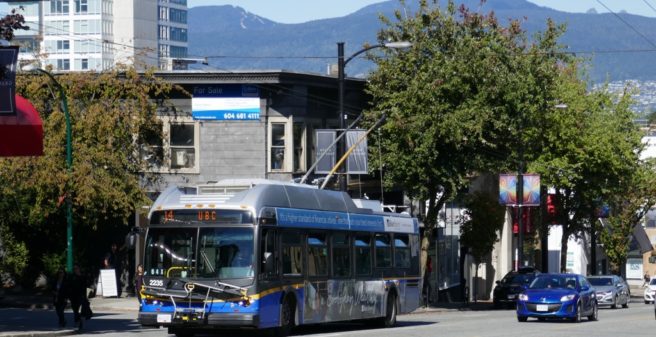
INDUSTRY FOCUS: Alternative Propulsion Systems
1. Introduction
In the last few years, transport planners have increasingly been concerned about the need to move towards a low carbon/zero carbon future. Even for cities with extensive electric metro and light rail services, the aim is to replace fossil fuels in their bus systems.
The most popular answer has been to look at the battery-electric bus (“BEB”). On the face of it, this seems such a simple and attractive solution. Just buy the bus and, as the Americans would say, “it’s good to go”. If anybody in a city with trolleybuses suggests that the trolleybus system could play a significant role, battery-bus advocates will point to the BEB and say, “Look! No wires!”.
But in life there are few magic solutions. The proposition that BEBs are much simpler and cheaper to install than trolleybuses may well be illusory. After all, there is so much in common between BEBs and battery-trolleybuses: traction motor; power electronics for control of speed and braking, batteries and chargers are shared in common. And weight for weight, power consumption will be very similar. The main difference is how power is transferred and stored, but this does not seem so fundamental a difference that it should lead to a significant difference in the capital investment required.
The aim of this document is to raise a question in the reader’s mind about the alleged simplicity and relative cost-efficiency of battery bus deployment compared with electrification using battery-trolleybuses with In Motion Charging (“IMC”). It attempts to examine the real-life capital costs of various bus electrification strategies and compare the estimated capital investments needed for:
a) a BEB system based on slow overnight charging;
b) a BEB system based on fast on route charging, often called opportunity charging;
c) a battery-trolleybus system using partial wiring and In Motion Charging
If this causes transit planners and politicians to avoid automatic assumptions on the question of bus electrification, it will have achieved its purpose.
It is not possible to produce conclusive proof that one solution or the other is “better”, whatever that would mean to an individual planner. First, obtaining precise costs for individual components is very difficult because of issues such as commercial confidentiality. Moreover, much will depend on the individual local circumstances of a particular city and specific routes.
The costs in this report are presented in Canadian dollars, mainly because detailed figures for BEB installations are available from two Canadian cities: Toronto and Vancouver. The other important point to remember when reading the report is that it is intended to cover large scale and heavy-duty applications.
What does emerge from the following is that large scale electrification using battery buses can require capital expenditure of a similar order of magnitude as for an equivalent trolleybus system using battery-trolleybuses with IMC.
2. Bus Electrification Options
In order to make worthwhile comparisons, we need to examine some real-life examples. While no two cities will be exactly the same, we can find data from two cities in Canada to form the basis of our cost comparisons.
First, there is the proposal by the Toronto Transit Commission for a garage for 300 BEBs using overnight charging http://www.ttc.ca/About_the_TTC/Commission_reports_and_information/Commission_meetings/2018/June_12/Reports/27_Green_Bus_Technology_Plan_Update.pdf
Second, there is the recent Low Carbon Fleet Strategy report for Translink, the transit operator in the Greater Vancouver area, on bus electrification until 2030. https://www.translink.ca/-/media/Documents/about_translink/governance_and_board/council_minutes_and_reports/2020/February/agenda_mayors_council_public_mtg_20200221.pdf
Costings for a trolleybus system using battery-trolleybuses with IMC using a streamlined overhead catenary system have been obtained from a number of cities and are available in the appendix
Three options are examined. Option 1 is a fleet of 300 BEBs using depot charging, as proposed by the TTC. Option 2 is for a slightly smaller fleet of BEBs using on route charging. Option 3 is for a fleet of battery-trolleybuses with IMC sufficient to cover the same workload.
As is explained below, consultants generally recommend that BEB fleets using depot charging will need to be at least 20% larger than their diesel or trolleybus competitors. A perfect numerical ratio would be 250 trolleybuses in Option 3 to 300 BEBs using depot/overnight charging in Option1. In fact the Vancouver trolleybus system has 262 trolleybuses, which is close enough for the purpose of using real-life costings. Option 2 for on route charging is an intermediate level where the additional size of the fleet may only be 12% larger, say 280 BEBs.
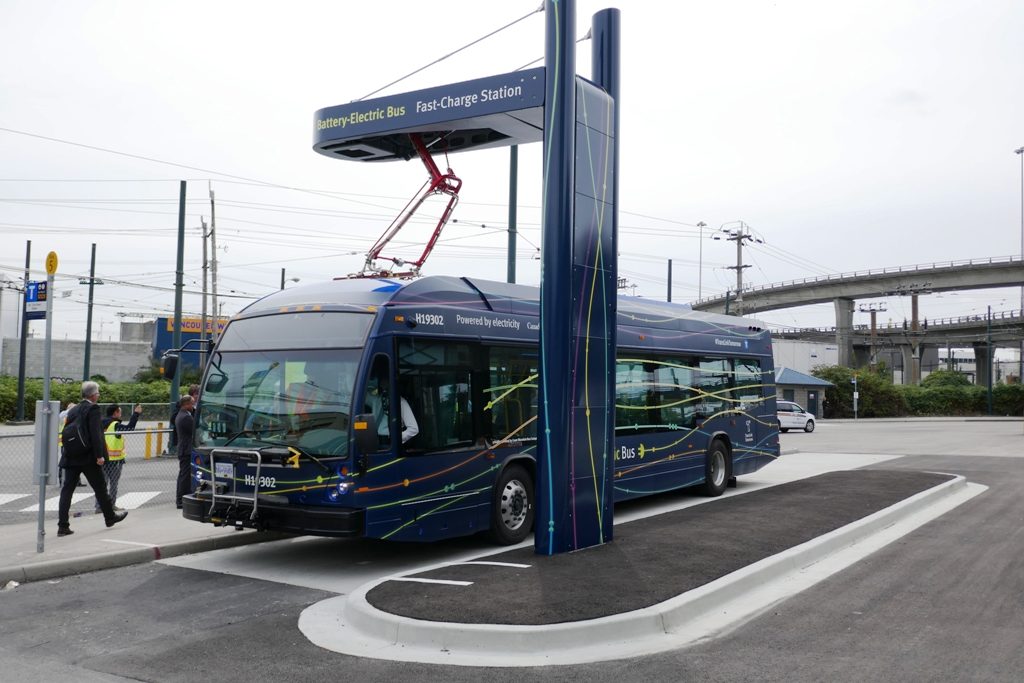
Option 1: 300 Battery Bus Fleet with depot charging
Based on the published plans of the Toronto Transit Commission.
a) capital cost of electrical installation
- 27.6 kVA switchgear linked to Toronto Hydro (this is TTC responsibility)
- 15,000 kVA transformer capacity owned by TTC (6 modular units of 2,500 kVA)
- 600V for garage; 480V for BEBs: Can$18m
- 15MW back up CNG generator: Can$ 11m
- 15MW Energy Storage System (ESS – energy stored 60MWh): Can$ 12.36m
- 80 charging enclosures with 160 overhead pantographs: Can$ 50m
- Total: Can$ 91m (min.)
Notes:
- Buses will be charged in two shifts: ~150 at any one session
- Installed power based on 150 buses drawing max 100 kW = 15MW
- 150 buses with 400 kWh batteries will require 60,000 kWh – i.e. 4 hrs charging @15MW
- The ESS has a storage capacity of 60 MWh. Cost estimate based on US $156 per kWh (Source: Bloomberg NEF) = Can$206 per kWh.
- Overnight chargers at Can $300k
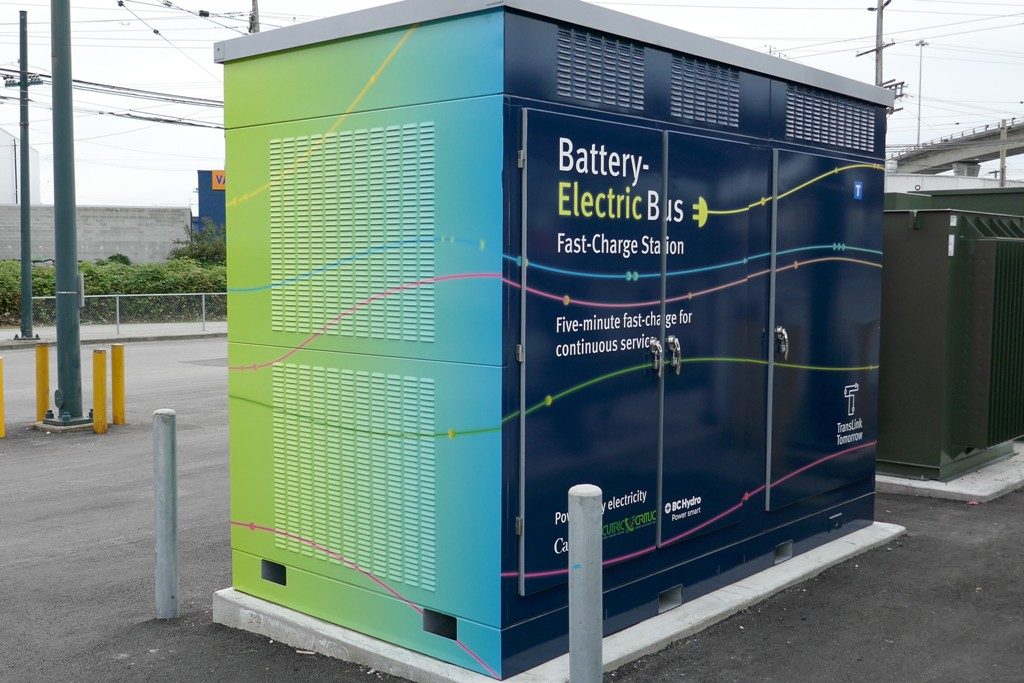
b) BEB fleet size and cost
Because of issues like charging downtime and maximum passenger load restrictions caused by battery weight, consultants recommend that a BEB fleet using depot charging needs to be at least 20% larger than a diesel or trolleybus fleet to maintain the same timetable and passenger throughput.
In this example a proposed BEB fleet of 300 is needed to replace a bus or trolleybus fleet of 250 vehicles. The fleet cost is calculated on the basis of 300 BEBs costing Can $1m each. This cost is borne out by recent Canadian purchases. Total cost Can $300m
c) Additional capital cost of land
c) addition capital cost of land A BEB fleet typically needs to be 20% bigger than for the equivalent diesel or trolleybus fleet.
The installation of large transformers; ESS and back up generators together with the individual charging units will also take up additional space.
It is difficult to give a definitive amount for the additional land cost imposed by the operation of BEBs. Much will depend on land values in the particular city and whether the garage is sited on the periphery of the city or closer to the centre, say in the inner suburbs.
However, a relevant example can be found in the recently opened Hamilton Transit Centre in Vancouver. This is a 7.3 hectare (18 acre) site housing 300 conventional buses and cost $136m in 2017. The cost is probably relatively modest, as it is situated at the southern edge of the City of Vancouver itself, adjacent to the Fraser River and in an area previously used for sawmills etc. In comparison, the old Oakridge Transit Centre, which is much closer to Downtown, was recently sold for $440m for its land value alone.
On a pro-rata basis, it is reasonable to estimate that the additional land cost of using a 300 BEB fleet rather than a 250 bus or trolleybus fleet would be in the region of $25m. The figure would be much higher in cities like Boston MA, which suffer from chronic space shortages.
d) Summary of capital costs
- Electrification costs: Can$91m++
- Fleet cost: Can$300m
- Additional land costs: Can$25m++
- Total electrification cost including BEB fleet and land: Can$446m++
Option 2: 280 Battery Bus Fleet with on route opportunity charging
a) Capital cost of electrical installation
- 100 DC fast chargers at bus loops each with 500 kVA transformer and rectifier: Can$150m
- Depot transformer to provide supplementary charging, Plus depot charging units estimated: Can$10m
- Total electrification costs: Can$160m
Notes:
Cost of DC fast charging station is based on Vancouver, Translink CEO speech and Low Carbon Fleet Strategy Report. Fast charging stations are quoted as costing between $1m and $2m each, depending on location, circumstances etc. A mid-range cost is used here.
Ratio of one charger per every 3 battery buses based on the initial contracts issued by Mosgortrans (Moscow transport authority) in 2018
Study based on Salt Lake City, Utah suggested a ratio of one fast charging station for every two buses.
b) Additional fleet size
See Option 1 b) above. In this example a proposed BEB fleet of 280 has the equivalent capacity of a trolleybus (or diesel bus) fleet of 250.
- Cost of 280 BEBs = Can$280m
c) Additional capital cost of land
The same principle outlined in Option 1 c) above applies here. For the purpose of this study, I estimate an additional land cost of at least $25m
d) Summary of capital costs
- Electrification costs: Can$160m++
- Fleet of 280 BEBs: Can$280m
- Additional land costs:Can$25m
- Total electrification cost including BEB fleet and land: Can$451m++
Option 3: Equivalent Trolleybus Fleet
I am using Vancouver’s trolleybus system as a point of comparison. It has a fleet of 262 trolleybuses. Ideally the comparator would be between a fleet of 250 trolleybuses and 300 (i.e. 120%) BEBs but this is close enough for the purposes of this document.
The overhead system presently consists of 160 km of two-way wiring.
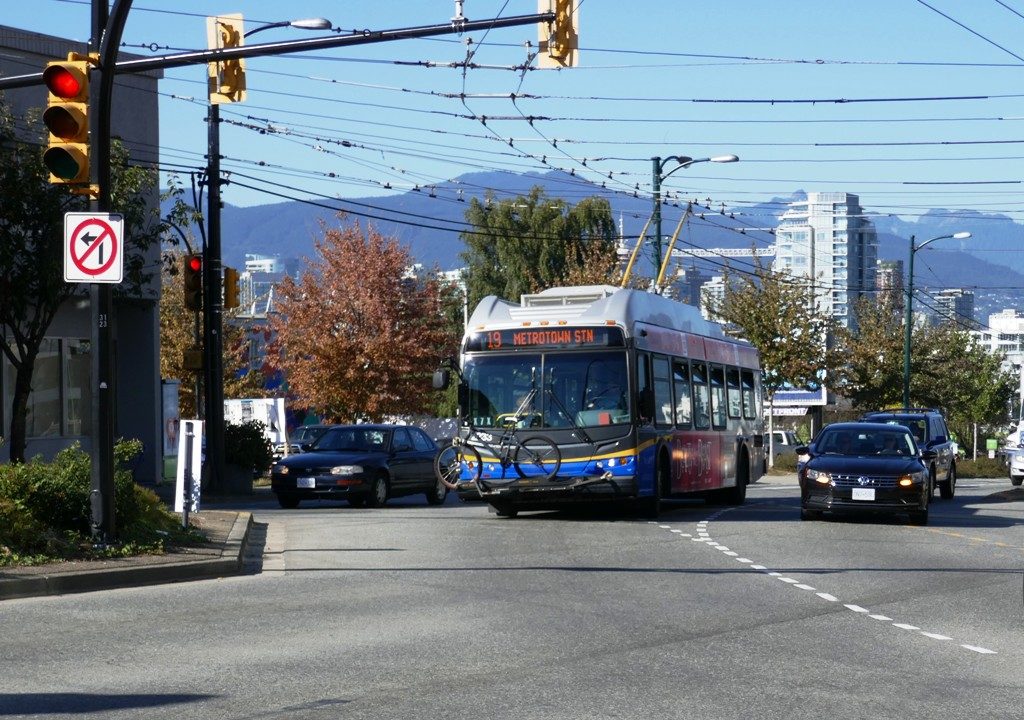
The cost comparison is based on the use of the latest battery-trolleybuses equipped with In Motion Charging (IMC). This technical development has three positive cost advantages for trolleybuses:
i) The length of wired route can be reduced significantly. As a rough rule of thumb, the reduction can be about 50% but the precise proportion will depend on local circumstances e.g. topography.
ii) Secondly, the capital cost can be greatly reduced by wiring straight, plain alignments and operating on battery power in areas where complicated and expensive junctions etc. would otherwise be required.
iii) Thirdly, economies can be achieved in the number and size of substations. As the latest IMC technology enables blending of traction power from both the overhead line and the battery, the level of redundancy required in the fixed electrical installation is lower than previously, as the on-board batteries provide their own back-up, for example if a particular section of overhead line is experiencing low voltage.
I have estimated that the installed power required for the system is 10 MW. This would be based on installation of 20 substations each rated at 500 kVA and spaced every 4 km.
a) capital cost of electrical installation
- Total 10 MW transformer capacity: Can$ 12m
- [10/15 of Toronto quoted cost] 10 MW rectifiers: Can$13.2m
- 80 km (50% of routing) of two-way plain overhead including feeders: Can$80m
- Total cost: Can$105.2m
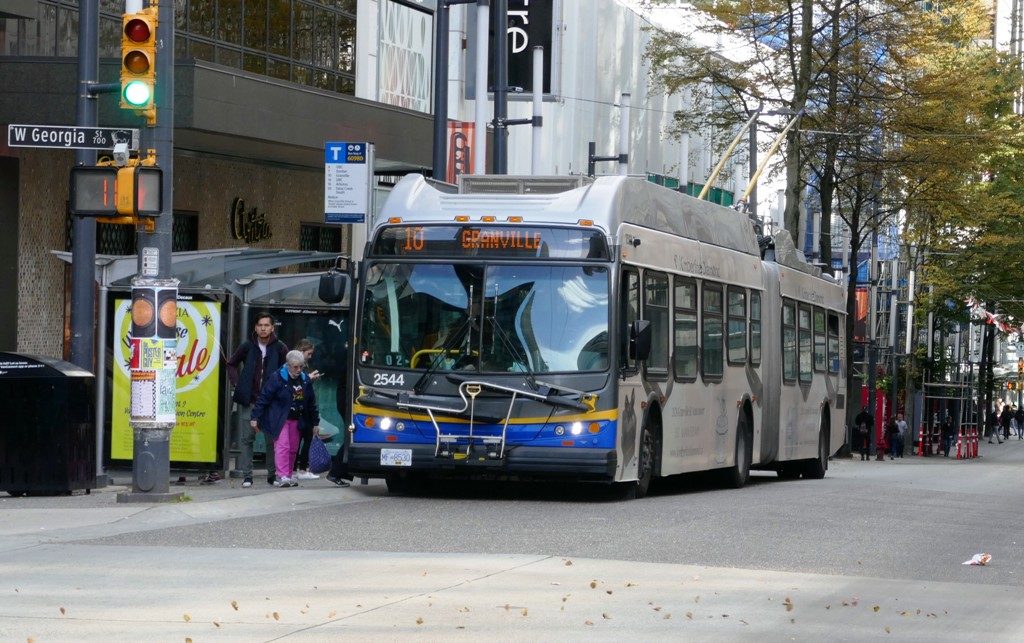
Notes: examples of peak shaving include equipment provided by ABB on SwissTrolleyPlus and Skoda’s use of supercapacitors for peak shaving in latest trolleybuses for Cluj-Napoca in Romania.
- pro-rated from Toronto chargers, adjusted to exclude charging stalls & pantographs etc
- Wiring cost estimate obtained from local contacts in CMBC trolley overhead.
- advice on installed power capacity provided by Andrés Emiro Dìez, Professor of Electrical Engineering, UPB Medellin Columbia.
- Cross check. ABB quote 500k Euro (Can $750k) per km including substations etc: Can$60m
b) Fleet Cost
Because of the proven nature and the technical attributes of trolleybuses e.g. theoretical 24-hour service availability, the trolleybus option requires the smallest fleet. – 250 trolleybuses.
Theoretically the inherent cost of a battery-trolleybus in a positive market environment should be broadly the same as for BEBs. For the purposes of this document, I suggest a premium of no more that 20% to recognise the more specialised nature of the market in N. America, i.e. a cost per trolleybus of Can $1.2m.
c) Addition capital cost of land
- Not required
d) Summary of capital costs
- Electrification costs: Can$105.2m
- Fleet cost: Can$300m
- Additional land costs
- Total electrification cost: Can$405.2m
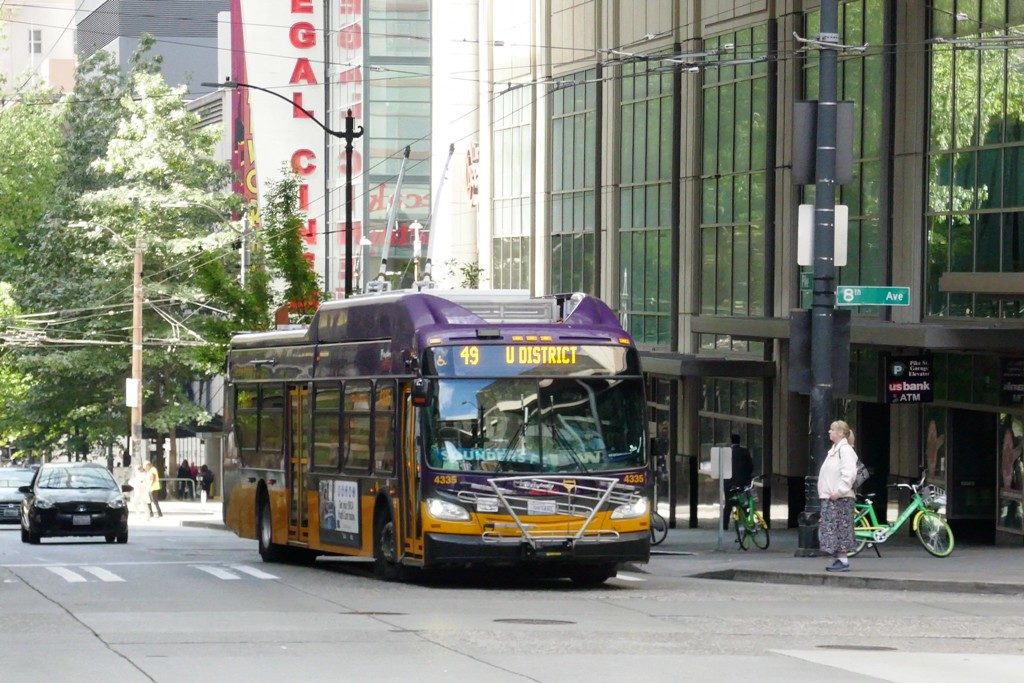
3. Conclusion
This report is not intended to “prove” that one type of vehicle is more economical, let alone “better”, than the other. While situations vary from city to city, the three possible approaches to large scale bus electrification give the following estimated capital costs:

As all three options are of a similar order of magnitude, it is important that transit planners and in particular political decision makers be aware that Battery Electric Buses are by no means the cheap and simple solution that many seem to think. And conversely that, contrary to appearances, an installation using battery-trolleybuses with IMC can be financially competitive with battery-electric buses.
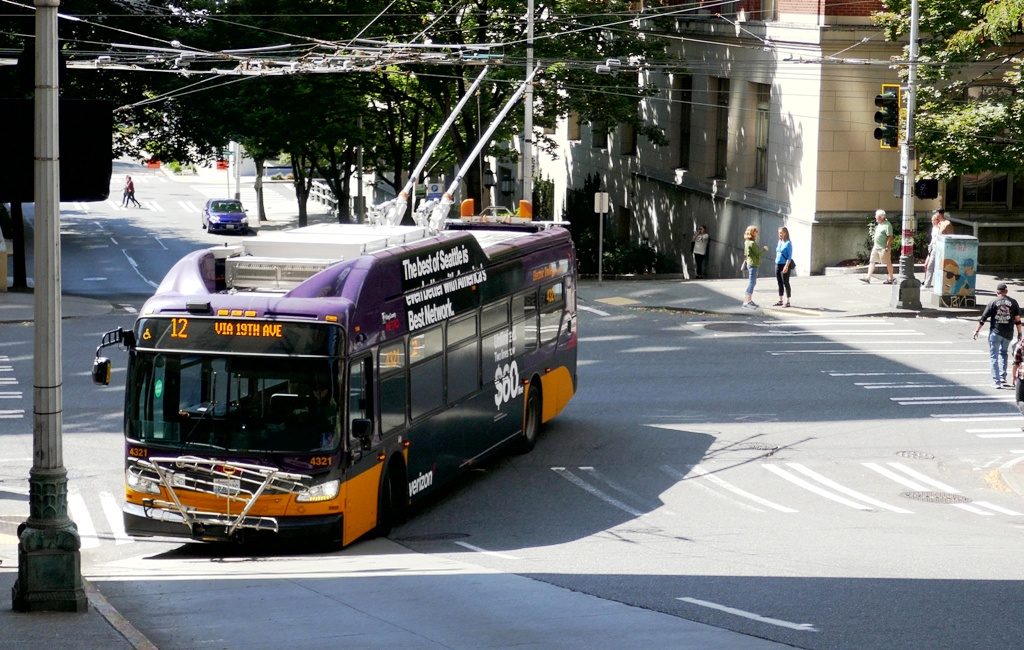
Appendix
A. BATTERY ELECTRIC BUS INSTALLATIONS
a) King County Metro (Seattle)
- Fleet of 120 depot charging BEBs 466 kWh with batteries
- 60 standard 12m BEBs @ US$925,000 each = US $55.5m
- 60 articulated 18m BEBs @ US$1,300,000 each = US $78m
- Total fleet cost: US $133.5m
- Garage Electrification Cost for fleet of 120 BEBs: US $50m to $60m
- Ratio of fleet to electrical plant is 1:0.45
b) Capital District Transit Authority, NY State
Siemens DC depot chargers quoted as US $121,000 each. I suspect that this small installation did not require any upgrade of transformers etc at the depot.
c) Translink Vancouver Initial Trial of Four Opportunity Charging BEBs
- Trial promoted by CUTRIC (Canadian Urban Transit Research and Innovation Consortium) commenced operation in September 2019.
- Trial of 4 opportunity charging battery buses plus two terminal fast chargers and one depot charger. Total cost Can$10m.
- Each initial charging station costs Can$1m
- The buses also cost around $1m each.
- Source: www.vancouversun.com/news/local-news/translink-will-run-four-electric-battery-buses-along-marine-drive-next-year
d) Translink Vancouver Low Carbon Fleet Strategy of Feb 2020
i) BC Hydro depot upgrade cost. These would range from:
- Port Coquitlam TC: Can$350.000
- Richmond TC: Can$4.500.000
- Hamilton TC: Can$11.000.000
But the higher cost transit centres would probably not be chosen for depot charging.
(see p30 of Translink memo):
ii) BC hydro feeder cable to remote substation
- Approximate cost per km of feeder cable: Can$1m/km
Source: Consultants’ report Page C-8
iii) Installed power for 200-bus depot 8MW to 10MW
- Depot preparation for the new Marpole Transit Centre: Can$40m
- [N.B. This is broadly proportionate to the cost of transformers and chargers quoted for Toronto’s proposed garage]
iv) Chargers
- Depot chargers SAE J3105 each Can$298,000
- On-route chargers: Can$2m
Source: All costs from Table 5, Page 26
v) Fleet Size
- Proposed fleet orders from 2020 to 2029
- 40-ft: on route charger: 136 BEBs
- 40-ft: depot charger: 407 BEBs
- 60-ft: depot charge: 92 BEBs
- Total Fleet: 635 BEBs
vi) Battery bus cost
Caution is needed. The costs quoted in the presentations to the Mayor’s Council are the incremental cost of BEBs over and above the baseline cost of buying diesel-hybrid buses
See slide 9 on p.36.
The projected actual costs are as follows:
- 40ft/12m depot charged bus: Can$1.1m
- 40ft/12m on-route charging bus: Can$0.95m
- 60ft/18m depot charged bus: Can$1.6m
- 60ft/18m on-route charging bus: Can$1.4m
Hybrid Bus Cost for comparative purposes
- 40 ft diesel hybrid bus: Can$890,000
Source: D-1 Appendix D Table D-1
B. TROLLEYBUS ELECTRIFICATION COST ESTIMATES AND EXAMPLES
Berlin Proposals for IMC Trolleybus system in Spandau
- Cost of wiring including electrical supply is Euro 121m.
- Network covered both wired and unwired is 125 km
- System cost (wired and unwired) equals Euro 968,000/km. Equals US$1.15m/km
- The actual length wired would be 76 km.
- Cost per length wired is Euro 1.59m/km. Equals US$1.89m
Source: “Machbarkeit eines Hybridoberleitungsbusbetriebs – Berlin-Spandau”
Mexico City:
- Construction cost of 1km with electrical supply is US $1.5m/km
Vancouver Marine Drive Extension 2009:
- 2.2 km wire extension
- 4 MVA rectifier station combined total: Can $8.795m
Vancouver – Current estimate
- 1km two-way wiring: Can $1m
- Large substation: Can $5m
- Small substation: Can $1m
Source includes internal trolley overhead department costings.
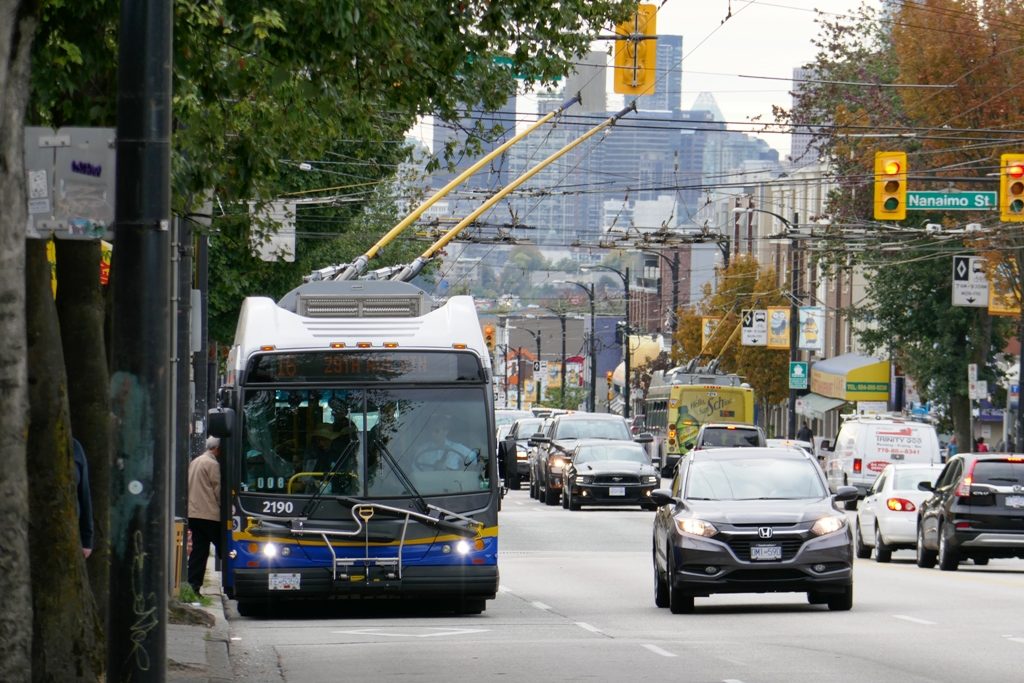
St Gallen Switzerland extensions 2020
- 7 km wiring extension = CHF 7m = Can$9.5. Per km =Can$1.35m
- 3 rectifier stations (rating unknown) CHF 2.3 =Can$3.1m; each Can $1.1m
Luzern Switzerland extension 2019
- 4.7 km extension of route 1 including electrification = CHF14.7m
- US$ 14.8m; Can$19.64; per km Can$4.19
French trolleybus overhead costs
A recent French article quotes the cost of trolleybus overhead including substations as Euro 600,000/km, equivalent to Can $ 920,000/km
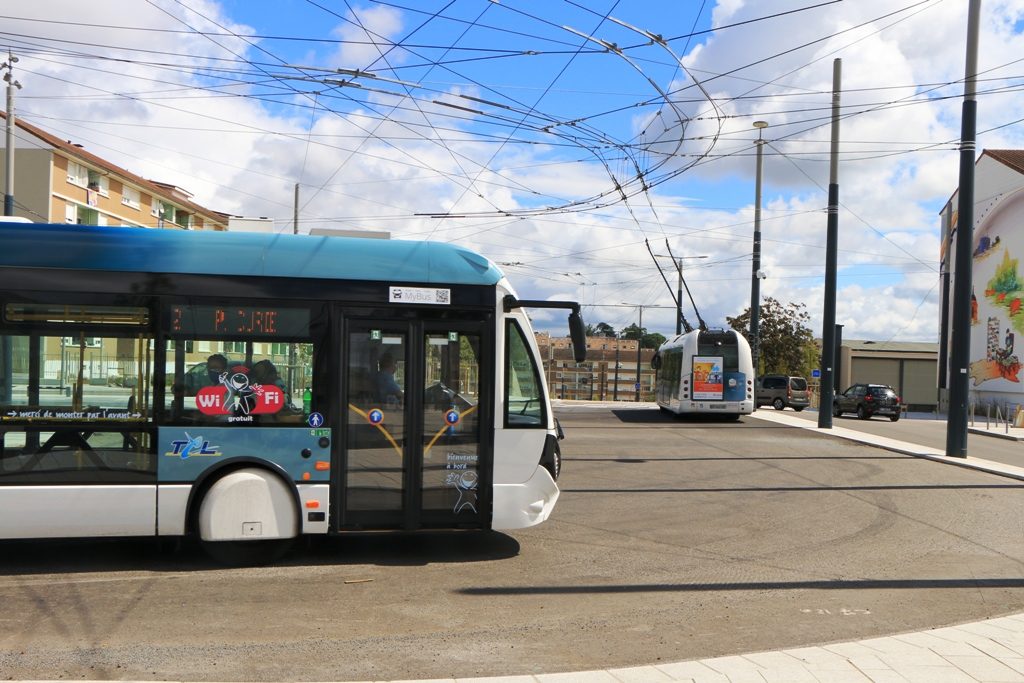


Question: How much up keep required on trolleybus overhead wires & cost. What is the lifetime difference between BCB’s & Trolleybuses? Thanks, Lyle.
Trolleybuses have a very long life span. Battery buses are límited to the battery lifespan and after you need a lot of money to replace them.
you need to replace the battery every 10 years but it only takes 40 years to replace the electric motor in Russia there are trolley buses made in 1970 and they are still running.
Long lifetime. We built new 5,5km long line and now:
old street lamps have old poles and need change for new. Cost of one metal pole is about 1000 Euros, cost of traction metal (trolleybus) pole 3-3,5 000 Euros, but lifetime first is about 20-30 years, second have, we are planning 100 years, because in present we are changing last of our first trolleybus poles from 1948… And a lot of them not need change. Only because street have revitalization. Wires can be use about 40-50 years. And yes, we have last part of wires and their last reconstruction was in 1973… And substation (transformers, rectifier, etc. can by used about 50 years too. City Mariánské Lázně this year change old substation from 1962/1970…
So we have new line, on trolley poles are street lamps, two new substations and total cost was cca 5M Euros. It can be made good and cheap.
[…] the cheapest transit system to build and operate, even cheaper than battery electric buses (see Urban Transport Magazine and Low-Tech Magazine). Unfortunately, battery electric buses are now the de riguer choice of city […]
Trolleybuses are an obsolete technology from the XIX century. The future stands for the clear sky and electric buses.
Trolley buses are electric buses and use 50% les energy and have no CO 2 emissions from battery manufacturing
To IhateTrolleybuses. You are right (joke) for the clear sky. So I suppose you fight for the removing of all traffic signs
theoretically the trolley bus can be used without a battery at all. the price of batteries in electric buses is 80%. So trolley buses can be 80% cheaper per unit than electric buses. even a village in the soviet union bus has a trolley bus https://youtu.be/dkFrjq-uurU
I do not even know how I ended up here, but I thought this post was great. I do not know who you are but certainly you’re going to a famous blogger if you are not already 😉 Cheers!